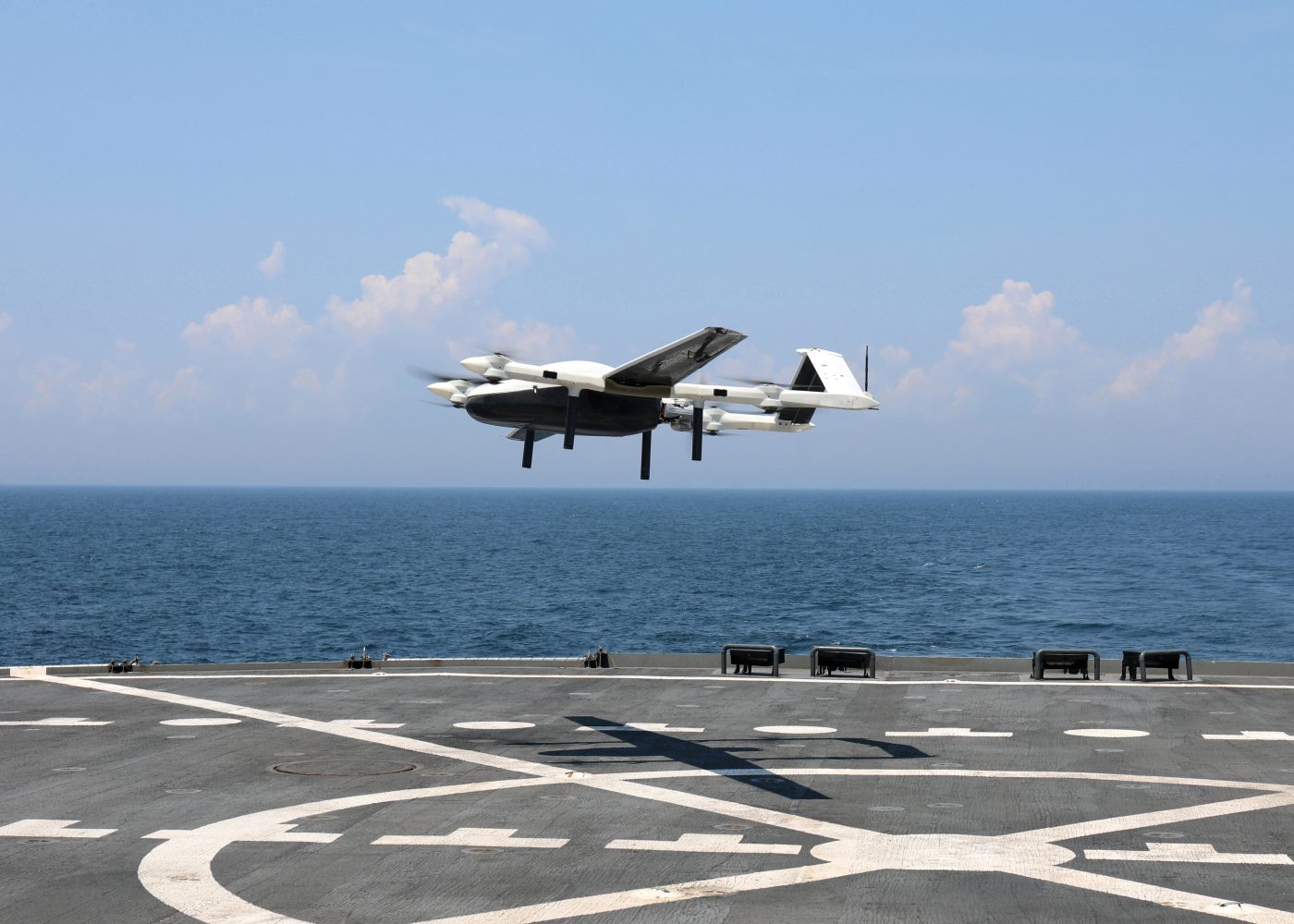
A century-old unit of the UK’s Royal Navy may be getting an aerial makeover. At least that’s what officials hope in examining whether drones can be used to assist the Royal Fleet Auxiliary (RFA) transport supplies to large naval ships around the globe.
Since it began its work in 1905 supporting Royal Navy ships by replenishing their reserves of fuel, food, spare parts, ammunition, medicine, and critical supplies, the RFA has primarily steamed stocks around in large cargo vessels. In recent times, it has been assisted by helicopters flying more limited volumes for considerably extended “last mile” deliveries. Now commanders are looking into the feasibility of using autonomous drones to handle smaller but important payloads – possibly up to 100 lbs. – over distances far out to sea.
As has usually been the case in their deployment in myriad public missions and business applications, drones flying RFA supply runs would cost less than current transport methods, cut delivery times, and free up people who currently must oversee and staff ship provisioning runs.
In examining the enlistment of UAVs in its operations, the Royal Navy is relying on the US-UK “special relationship” to quiz American colleagues about their research with drones.
Over the summer, the US Navy’s Military Sealift Command ran test flights with the craft carrying 25 lbs. payloads between ships on patrol. Deliveries of those relatively lightweight parts and tools for repair purposes passed its proof of concept objectives, and allowed the division to continue exploring broader applications. Royal Navy officials say they are benefiting from what their American colleagues are learning.
“The RFA is looking very closely at the Military Sealift Command and the opportunities around using drones to make deliveries at sea,” the unit’s top official, Commodore David Eagles, told the Royal Navy’s online publication.
In many ways, deployment of drones over the water would merely put a different spin on the way the craft have already been tested in making deliveries of critical supplies to combat areas. Those trials have been centered on medium-heavy lift Malloy Aeronautics TRV-150s UAVs with maximum payloads of 150 lbs. flying medical supplies like blood plasma for use treating critically wounded troops. The vehicles were found to successfully perform those missions over distances of up to 43 miles.
Some of those test flights originated from ships positioned offshore, meaning further adaptation by the RFA to operate land-to-sea or ship-to-ship supply runs by drones wouldn’t involve an enormous logistical leap. What it would require, however, is further development of UAVs to considerably extend flight capacities, and muscle up their payload potentials.
Should that happen, the RFA certainly has no shortage of supply work to offload on drones. During just one recent mission supporting the HMS Queen Elizabeth’s deployment to the Pacific and back, for example, the RFA delivered 390 tons of provisions – spread out over 900 runs – to the ship and accompanying vessels. Those including food, beverages, general goods, medical supplies, mail, and parts for F-35 stealth fighters and Merlin and Wildcat helicopters.
While drones may one day be able to handle some, if not most, of that haul, it’s unlikely they’ll ever be able to deal with the millions and millions of liters of fuel and water the RFA also provides.
U.S. Navy photo by Bill Mesta
FTC: We use income earning auto affiliate links. More.



Comments